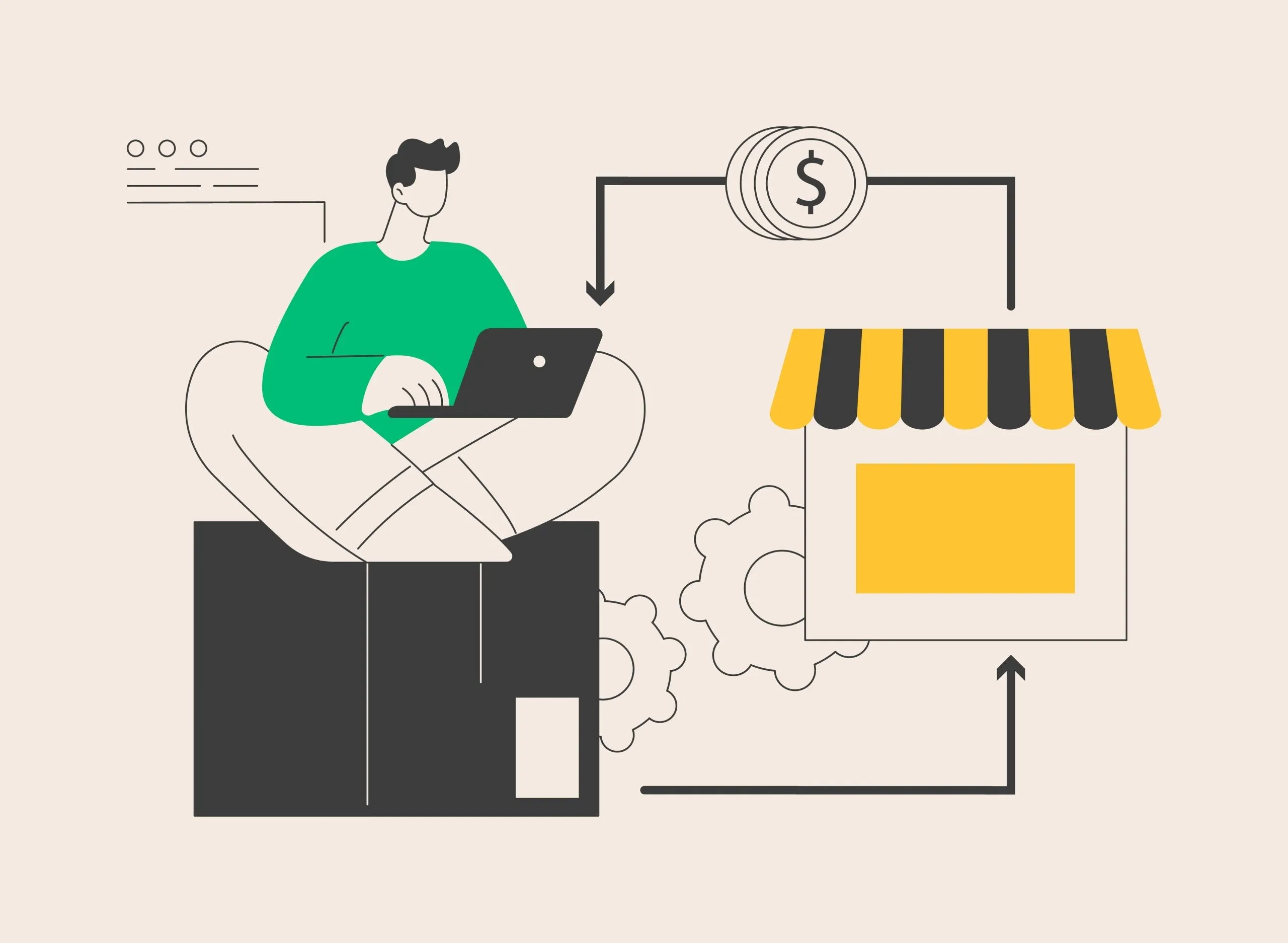Omnichannel retailing, is a retail strategy that ensures customers have a consistent experience while shopping through various channels. The most important feature of this strategy is the integration of both physical and digital retail experiences. This means combining various sales points such as stores, websites, mobile applications, call centers, and other digital channels (Instagram, WhatsApp, Facebook Messenger, etc.) to provide customers with an integrated shopping experience.
Omnichannel retailing allows customers to shop anytime, anywhere and on any device, enhancing customer satisfaction, strengthening brand loyalty, and increasing sales. This strategy enables customers to seamlessly transition between different channels and continue their shopping experience across various platforms, thereby improving the overall customer experience.
To better understand the core features of omnichannel retailing, let’s also touch on the fundamental characteristics of Single-Channel and Multichannel strategies.
What is Single-Channel?
Single-channel refers to a retail business using only a single sales or marketing channel. This typically means sales are conducted through a specific channel, such as a physical store or an online store. For example, if a business sells its products only in physical stores or only through an e-commerce website, it is considered a single-channel retailer. Single-channel retailing limits businesses to operating in a specific channel and may prevent potential customers from accessing the business through other channels. Therefore, many retail businesses today adopt omnichannel strategies to provide more options to customers and increase sales.
What is Multichannel?
Multichannel refers to a retail business using multiple sales or marketing channels to reach customers. This includes sales through various channels such as physical stores, e-commerce websites, mobile apps, call centers, and social media platforms. For example, a retail business that sells its products both in physical stores and online storesis considered a multichannel retailer. Multichannel retailing aims to expand the customer base, increase sales, and enhance brand awareness by offering different shopping options to customers. This strategy provides customers with flexibility and convenience when shopping across different channels. However, since these channels are not integrated, it does not provide a seamless customer experience.
What are the features of omnichannel retailing?
Omnichannel retailing is a customer-focused, integrated, and consistent approach. This approach is becoming increasingly important to meet customer expectations and gain a competitive advantage.
Key features of omnichannel retailing are as follows:
Integration and Consistency: In omnichannel retailing, different sales channels (physical stores, online stores, mobile applications, etc.) are integrated with each other. This ensures that customers can continue their shopping across different channels without experiencing inconsistencies.
Customer Focus: Omnichannel retailing is customer-centric. It aims to provide the best experience by considering customers’ needs, preferences, and shopping experiences.
Seamless Channel Transition: Omnichannel retailing provides seamless transitions for customers between different channels. Customers can shop using any channel they prefer at any time and switch between these channels effortlessly.
Unified Inventory Management: In omnichannel retailing, unified inventory management is provided across all sales channels. This prevents stock imbalances and ensures that customers have access to the products they want at any time.
Technology-Driven: Omnichannel retailing effectively uses technology. Advanced technological infrastructures provide personalized experiences for customers and ensure data integration across sales channels.
Mobile Priority: With the increase in mobile device usage, omnichannel retailing adopts mobile-first strategies. Mobile applications and mobile-optimized websites provide customers with an easy and fast shopping experience.
What are the benefits of omnichannel retailing for businesses?
Customer Satisfaction: Omnichannel retailing provides customers with a consistent shopping experience across different channels. This allows customers to shop using any channel they prefer at any time, increasing customer satisfaction.
Brand Loyalty: Providing a consistent experience increases customers’ loyalty to the brand. An omnichannel strategy encourages customers to prefer the brand and shop repeatedly.
Increased Sales: Selling through multiple channels expands the customer base and boosts sales. Offering customers the option to shop across different channels allows potential customers to discover the brand.
Stock and Inventory Management: Omnichannel retailing improves stock and inventory management. Integrated inventory management across all channels prevents stock imbalances and ensures that customers have access to the products they want at any time.
Competitive Advantage: Most customers now prefer to shop through multiple channels. Omnichannel retailing is essential to meet this demand and helps businesses maintain a competitive edge.
These benefits encourage businesses to adopt an omnichannel retailing strategy and help them embrace a customer-centric approach.
How to Become an Omnichannel Retailer?

The key steps to implementing omnichannel retailing are as follows:
1. Identifying Customer Needs: The first step is to understand the needs and preferences of target customers. It’s important to determine which channels they prefer, which devices they use, and what they expect from their shopping experience.
2. Creating Integrated Sales Channels: Integrate different sales channels such as physical stores, online stores, mobile applications, and social media platforms. By connecting these channels, provide a consistent experience for customers
3. Strengthening Technological Infrastructure: A strong technological infrastructure is necessary for omnichannel retailing. Use advanced technologies in areas such as inventory management, stock tracking, customer relationship management, and data analytics.
4. Offering Personalized Experiences: Meet customer expectations by providing personalized shopping experiences. Offer recommendations based on their past purchases, preferences, and behaviors.
5. Developing Mobile-First Strategies: With the increase in mobile device usage, adopt mobile-first strategies. Provide customers with a fast and user-friendly shopping experience using mobile applications and mobile-optimized websites.
6. Evaluating Data Analytics and Feedback: Regularly assess customer feedback and data analytics. This information will help you continuously improve your sales channels and strategies.
To successfully implement an omnichannel retailing strategy, you must continuously focus on customer feedback, market trends, and technological developments. Adopting an innovative and flexible approach is essential to increasing customer satisfaction and maintaining a competitive advantage.
Check out this article: Why Should You Get Fulfillment Service?





